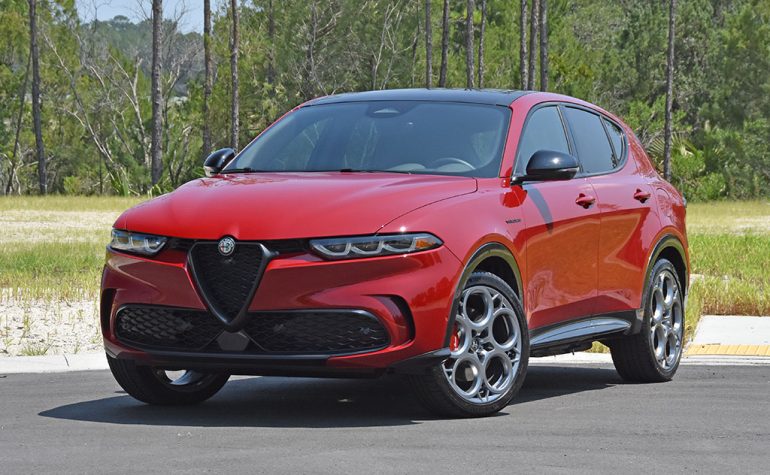
The presence and return of Alfa Romeo in the United States has resonated with enthusiasts quite well for many years, and in an effort to reach deep into other segments, the Italian brand brings us the Tonale, a compact SUV with a spicy Italian flare that fits quite well for many American lifestyles. Spending a week with the all-new Tonale, there’s much to welcome with wide open arms giving Alfa Romeo a new lifeline on this side of the pond.
Starting life exclusively as a plug-in hybrid electric vehicle (PHEV), the new Alfa Romeo Tonale is much to do about breaking into a newfound love for such technology. While the PHEV side of the Tonale mostly hides in the background, those that make the conscious choice to plug it in will benefit greatly to have about 32 miles of all-electric range and peace of avoiding range anxiety with the gas power that it has.
Also, don’t forget that you can get discounted new car pricing with a free quote through qualified local dealer partners.
While the new Alfa Romeo Tonale is heavily based on the Dodge Hornet, it brings a more edgy style by way of its Italian roots, which hopes to win over those who want something truly different in American suburbs. In being different, the Tonale is the right choice in looking at my test vehicle adorned in Alfa Rosso Red paint, stylish 20-inch Grigio wheels, eye-catching 3+3 front and rear LED lighting, and the familiar Alfa grille up front. The Tonale can’t help but look sporty with almost an exotic theme.
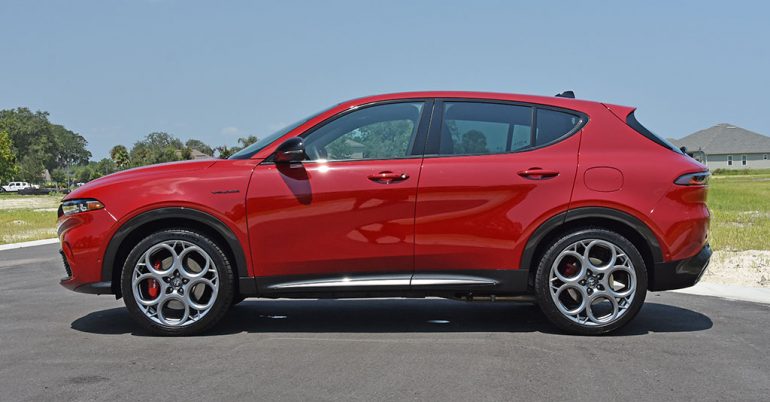
Being exclusively a PHEV in all trim levels, the Alfa Romeo Tonale focuses on tweaking its “DNA” in a simplified setup. That DNA translates into its three defined drive modes, “D” being a Dual Power mode, “N” being a default Natural drive mode, and “A” standing for Advanced Efficiency. In any mode, the electric motor that powers the rear wheels is good for 121 horsepower and 184 lb-ft of torque, which works well on its own to get the 4,133-pound compact SUV moving. The power seems sufficient for “normal” driving, but I found that the engine will start up often upon demanding somewhat moderate acceleration instead of staying off to use all available electric power. The gas engine, a 1.3-liter turbocharged inline-4-cylinder, produces 180 horsepower and 199 lb-ft of torque. When the system works in harmony with the electric motor and gas engine, you have a total output of up to 285 horsepower and 347 lb-ft of torque.
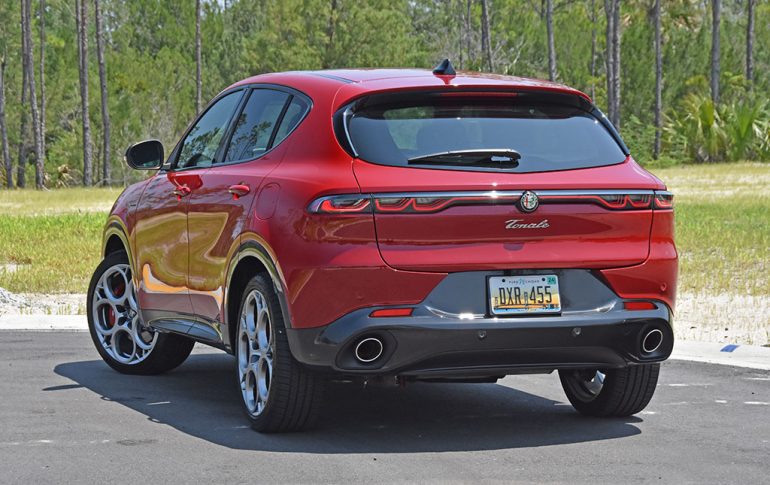
Power from the gas engine is sent through a 6-speed automatic transmission for powering the front wheels, while the rear is left to electronically manage the electric motor, which sometimes strongly powers the rear upon turn-in with occasional braking of an individual wheel to simulate vectoring. Having the electric motor at the rear axle and the gas engine powering the front wheels makes for an interesting drivetrain for its “all-wheel-drive” setup. The feeling is actually fun where the Tonale SUV feels lively on twisty roads at lower speeds.
While the overall system power is adequate and can be a little fun, the transmission seems to constantly downshift when on the highway at speed. I noticed such when keeping with traffic on the Interstate where the Tonale didn’t feel it had the immediate power to retain 6th gear, which was strange considering the power figures on paper. Otherwise, the Tonale handles well and has more than enough grunt to overtake and leave some on the table for driving enjoyment. When you have that enjoyment of full throttle, you’ll hit 60 mph from a stop in 5.6 seconds.
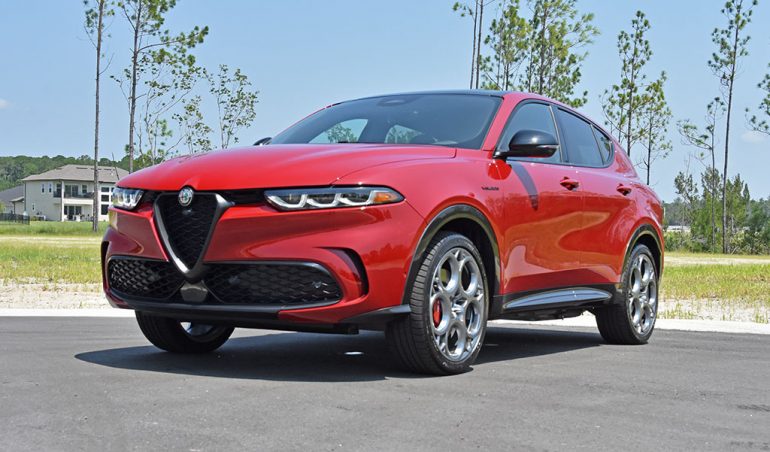
The suspension system using two-mode adaptive dampers felt a bit soft for my taste in the normal mode, where you could only use the aggressive damper setting if you switched the drive mode to Dual Power mode, which is essentially the vehicle’s Sport mode. It would have been nice to have an individual drive mode to switch just the dampers alone into their sportier setting to reduce the body from lofting a bit more than I like going over lumpy road surfaces at speed.
The braking feel is pretty good, with the transition from braking regen to recharge the battery to the use of the friction brakes almost seamless. The front brakes use Brembo 4-piston calipers, which feel strong within the legal limits out on public roads. Braking regen is only changed through the drive mode or using the steering wheel shift paddles to downshift the transmission, which then immediately fires up the engine if it is not already running. Otherwise, you’re left to a single braking regen level.
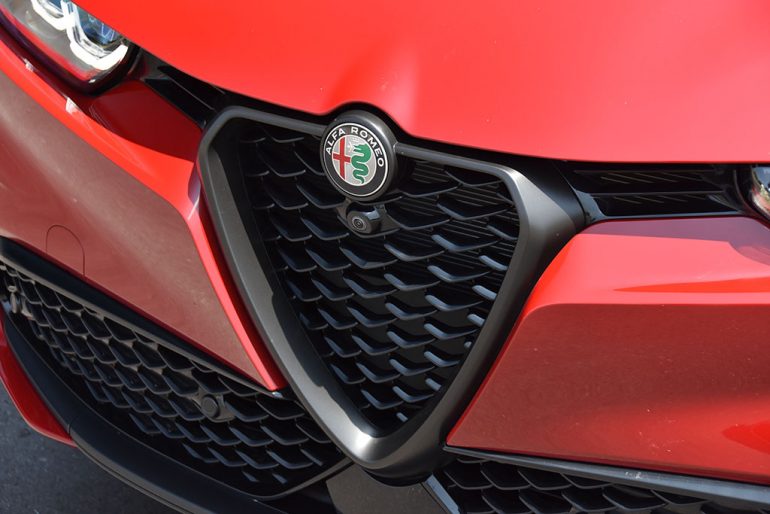
The hybrid management of the Tonale offers an e-Save mode to save any charge you have in the 15.5-kW battery pack. However, I found that using the e-Save mode would still discharge the battery at times and hardly ever charge up the battery to add range on the EV side of things. I chalked up e-Save to only charge the battery when braking using the regen power to feed back to the pack instead of having the engine recharge. Deceleration sometimes doesn’t regen anything as it feels like the vehicle disengages the drivetrain to coast.
Having the estimated 30 miles of electric-only range is a welcoming proposition. I was able to muster out 31 miles during my all-electric journey but with the caveat of the engine firing up about four times during my drive, but it ran for momentarily for just under 30-second sprints. Utilizing its onboard 7.4-kW charger, charging up the battery via my home Level 2, 240-volt, 40-amp charger, took just under 3 hours. Unfortunately, there is no ability to use DC fast charging as there is no onboard charging capable of such, and the charge port doesn’t have a compatible CCS connection.
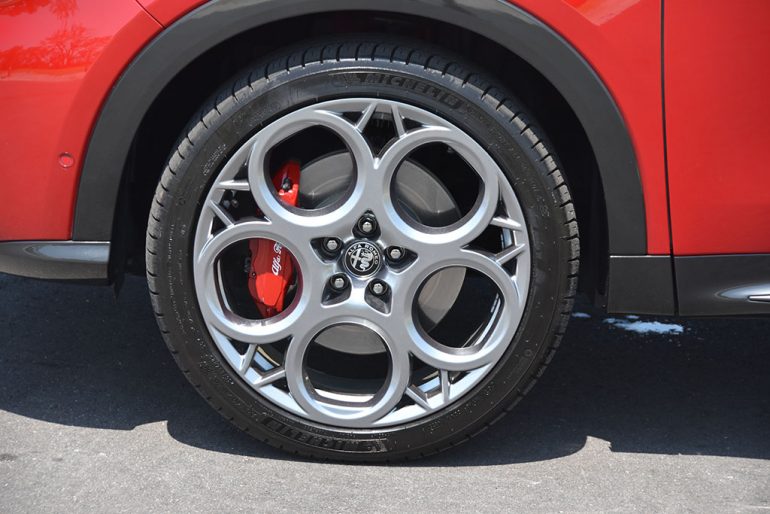
Overall, fuel economy landed around 27.8 mpg when all was said and done with a 45-mile trip using the Interstate and a few country highway roads with speeds varying from 45 mph on the back roads up to 75 mph on the Interstate. Alfa Romeo recently revealed the EPA estimate for the Tonale at 77 MPGe combined and a total of 33 miles of fully electric range, and 29 mpg combined when you have a depleted battery. You’ll be mindful of the 11.2-gallon gas tank, which gives you a gas-only range of about 324 miles and a total range of nearly 360 miles if you fully charge the battery and fill the tank with recommended premium fuel.
The interior of the Alfa Romeo Tonale fits the mold of what you find in the Dodge Hornet, but there are some characteristics that set it apart, such as the climate vents and the upper soft-touch dashboard areas. Otherwise, there are a lot of similarities. The 12.3-inch digital gauge cluster is nicely customizable and can slightly mimic a vintage style of dials, in addition to displaying the navigation map in the center.
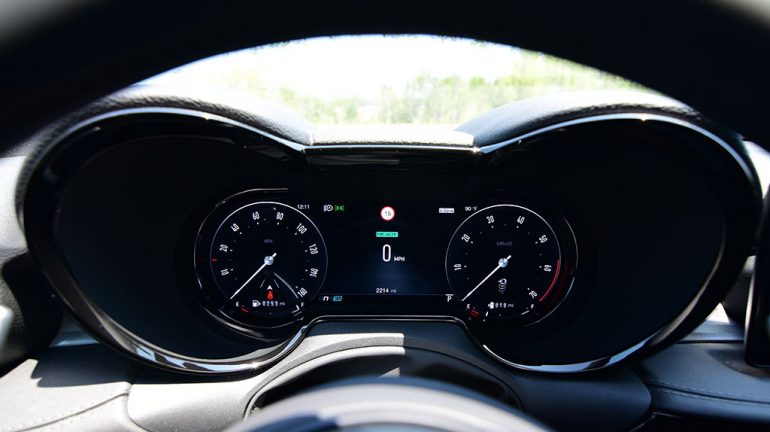
The infotainment system, using a 10.25-inch touchscreen, takes many elements from the Uconnect system under the Stellantis umbrella with a short learning curve and decent-enough response. The system is mostly straightforward, with its core functions listed in a row on the left side, but some vehicle and system settings may take a while to access. One interesting part is system is using the voice prompt by saying, “Hey Alfa,” I may have laughed a little in doing so to instruct the system to lower my climate temperature. The dual-zone automatic climate controls are simple physical buttons and a toggle button for temperature adjustments. I often found myself forgetting where the volume control is as it resides in the right corner area of the shifter housing as a knurled scroll wheel. There’s also wireless or USB-connected Apple CarPlay and Android Auto integration.
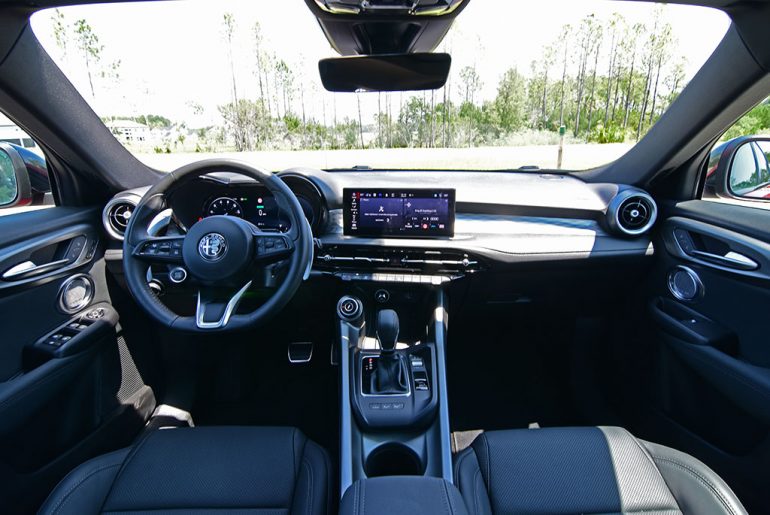
The seating areas are decently sized and accommodating for most, except for the heated and ventilated seats up front don’t feel very supportive from the bubbly bolstering. There’s a good range of adjustment up front, and the rear seating area has a good amount of space with good legroom, provided you’re not too much over 6 feet tall. The accented stitching and bright trim work attempt to accentuate a welcomed flare, but those elements tend to get a bit lost in the otherwise dark interior.
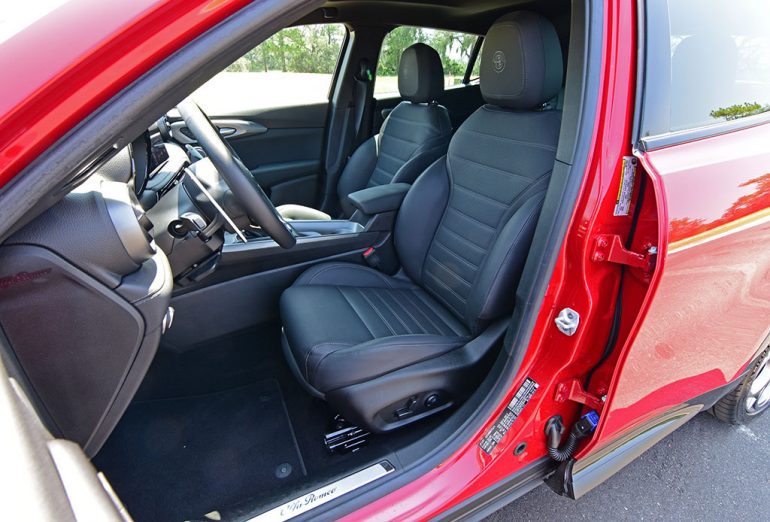
The cargo room is on par for such a class of a crossover having 23 cubic feet behind the rear seats. Fold down the manual 60/40-split seatbacks, and you have 51 cubic feet of space, all accessed through a power liftgate.
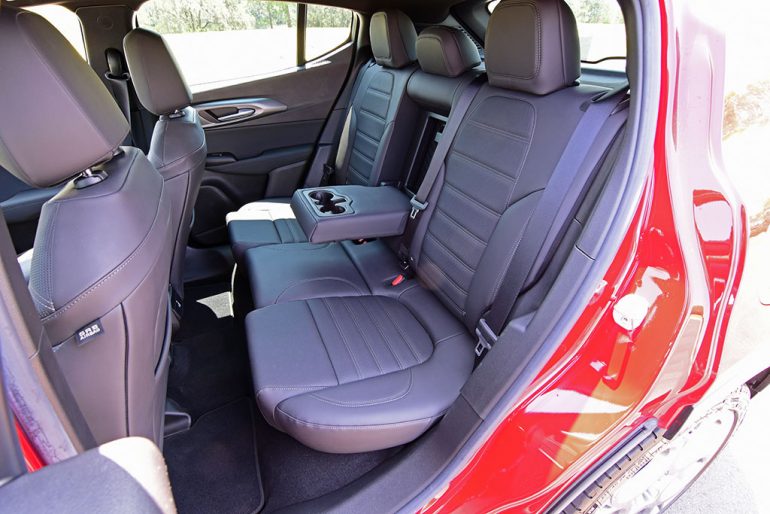
The Alfa Romeo Tonale bundles up all expected active safety features as standard equipment across the board on all three trim levels, which include the typical highlights of blind-spot monitors, lane departure warning/lane keep assist, forward collision warning/emergency braking, adaptive cruise control, rear cross-traffic alert, and an available 360-degree camera system.
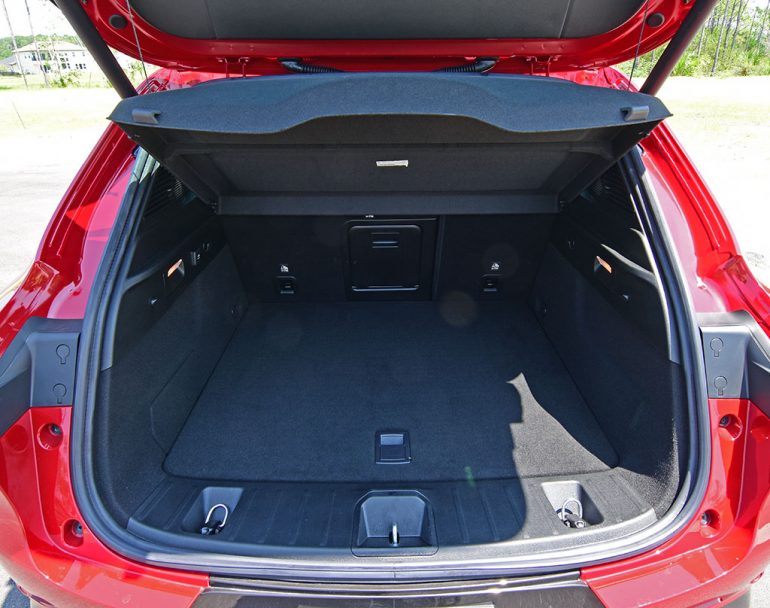
The new Alfa Romeo attempts to keep its premium approach to a PHEV SUV at a decent level, starting at $42,995 for the base Tonale Sprint before any fees or options. Fully loading out my top-trimmed Tonale Veloce test vehicle will have you at $57,290, which includes a $1,595 destination fee.